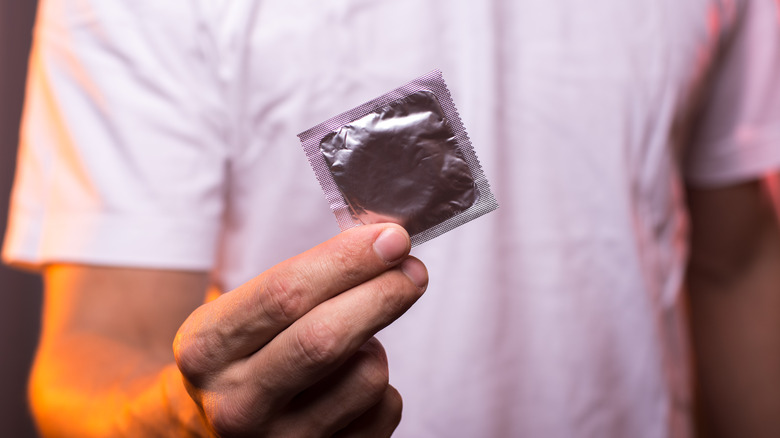Do Condoms Cause Cancer?
Condoms have been used as a birth control method as far back as 3000 B.C., according to a 2013 article published in the Indian Journal of Urology. Ancient civilizations ranging from the Egyptians to the Romans used everything from linen to sheep intestines to fashion a sheath worn over the penis during intercourse to prevent pregnancy and disease. By the 19th century, condoms began to be made of rubber, slowly evolving into the condoms we know and use today.
In the 21st century, according to the Centers for Disease Control and Prevention (CDC), male condoms remain among the most popular forms of contraceptives in the U.S., with 8.7% of contraceptive users citing them as their preferred method. Their popularity stems from their easy availability, low cost, and the fact that you can use them spontaneously (via WebMD). In addition, they're highly effective, with a success rate of approximately 98% at preventing pregnancy. However, Cleveland Clinic notes that there can be some risks associated with condom use, such as an allergic reaction to latex, a urinary tract infection as a result of the spermicide used in some condoms, and irritation to either the penis or the vagina. But, for all the associated risks, some have posed a more startling question about condoms: can they give you or your partner cancer?
Certain chemicals in condoms can be dangerous
The main culprit in the discussion of the link between condoms and cancer is something called nitrosamines, according to a 2014 report from the Reproductive Health Technologies Project. These are carcinogenic chemicals that form during the manufacture of condoms. In some cases, these can cause damage to DNA repair processes and lead to the transformation of cells, elevating the potential risk for cancer. The main concern is the fact that the mucous membranes of the mouth, penis and vaginal walls all could be penetrated by these chemicals during sexual activity.
However, studies have found that the risks from nitrosamine exposure from condoms are comparatively low. A 2001 report published in the International Journal of Hygiene and Environmental Health showed that nitrosamines are found in a wide variety of rubber products, including gloves, balloons, and bottle nipples, as well as foods and tobacco smoke. In fact, many are 1,000 to 10,000 more likely to be exposed to nitrosamines in food and tobacco smoke than they would be from condoms. That said, the Reproductive Health Technologies Project points out that, despite the minimal exposure, nitrosamines can be removed from the condom manufacturing process without causing any issues with their safety and efficacy.


